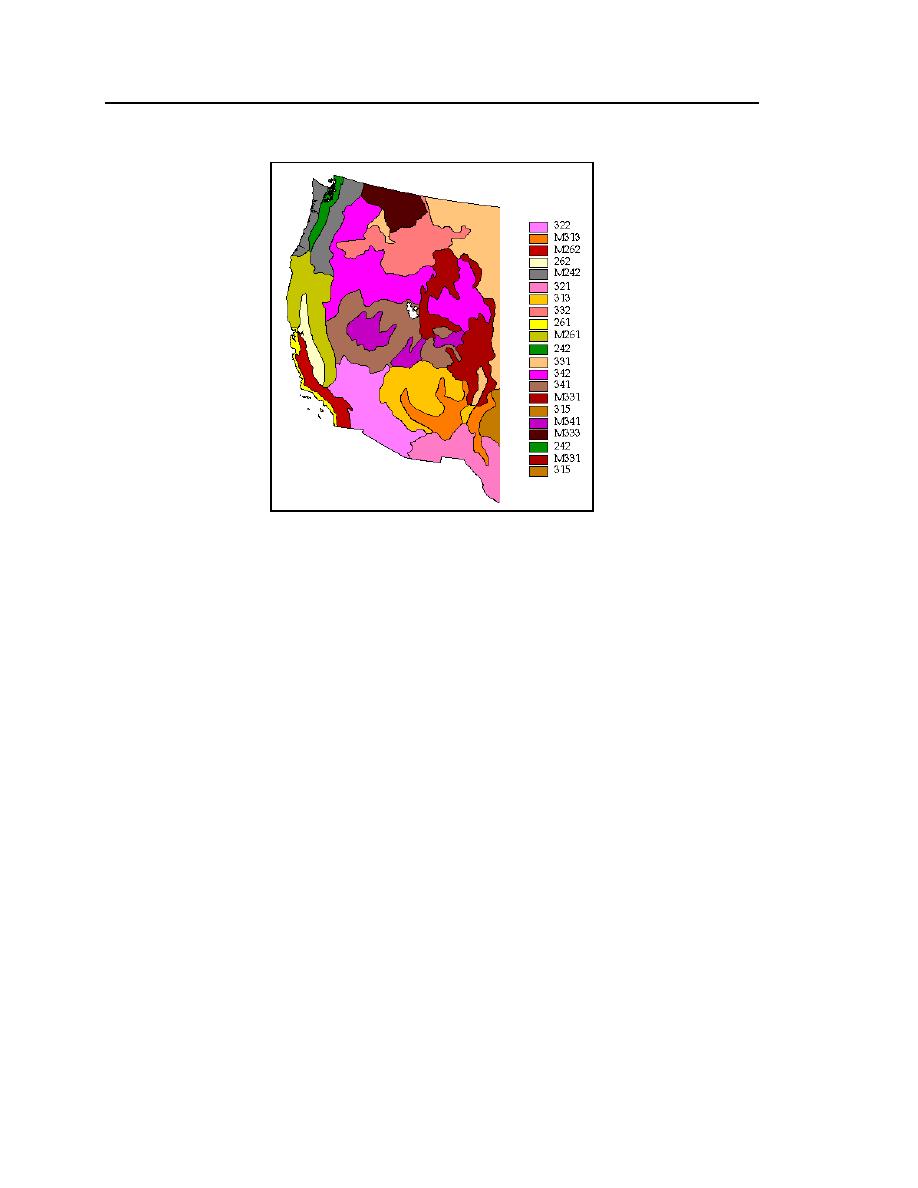
20
ERDC TR-04-1
Figure 4. Ecosystem provinces of the west-
ern United States. See Table 2 for names of
provinces and link to http://www.fs.fed.us/
colorimagemap/ecoreg1_provinces.html for
further description of each.
Meteorological Sources of Moisture
Three sources of moisture influence precipitation patterns in the Southwest:
winter North Pacific frontal storms, summer convective thunderstorms, and late-
summer eastern North Pacific tropical storms (Ely 1997). The relative impor-
tance of each storm type in different regions of the Southwest can be seen in the
average monthly rainfall amounts for each state in the region (Table 3). Further
information about rainfall in each state is available at www.wrcc.dri.edu.
North Pacific Frontal Storms
Winter North Pacific frontal storms that affect the southwestern U.S. result
from low pressure systems traveling in the upper air westerly wind belt. During dry
winters in the southern portions of the study area, the clockwise rotation around a
high pressure ridge located just off the west coast of the U.S. tracks frontal storms
to the north, impacting the Pacific Northwest (Fig. 5a). Wet winters occur when the
high pressure center is displaced farther to the west, allowing the clockwise
rotation to steer more frontal storms into Arizona and New Mexico (Fig. 5b).



 Previous Page
Previous Page
